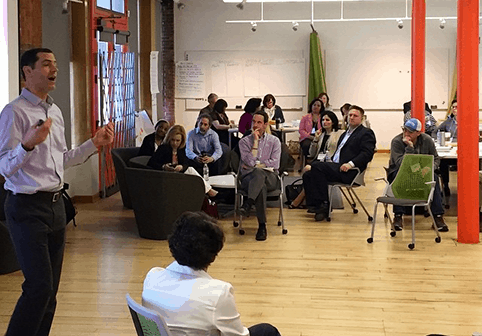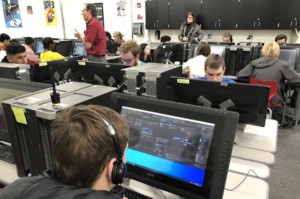Your Planning Process Signals What’s Important to You

A dozen staff-led interactive sessions, team problem solving, 2 minute TED talks, a cooking class, and bowling–the retreat signaled that distributed leadership, high engagement learning, and teamwork were important.
As a learning design firm, we try to practice what we preach. We start each staff meeting with 20 minutes of learning. We take turns constructing a learning experience around a book, a video, or a prompt. In addition to staff development, it signals that learning is our priority.
When designing a planning process, leaders are usually focused on the pressing questions that must be answered: How to boost impact? How to boost achievement? How to deploy new technology?
Having worked with hundreds of impact organizations, we have found that how you plan may be as important as what you decide. The planning process itself is an advocacy opportunity–it signals what’s important to you. It signals who matters.
The best recent example we’ve seen of process as signaling opportunity is the inclusive and iterative planning process driving Rhode Island forward (featured image). Six questions drove the design of the planning process:
- What if we started the planning process by listening?
- What if we invited those most affected by public education to make decisions?
- What if we treat plan writing like an engagement challenge rather than a writing challenge?
- What if we train our community to think like designers?
- What if we provide our community team with the staffing that we would need to do our best work?
- What if we trust the decisions of our community?
The plan is being developed in four rounds of “rapid prototyping”; in each round the team publishes a draft to the public for feedback and executes revisions to the draft within two weeks of publication (see recent feedback on plan prototype 4).
Up the road, new Boston superintendent Tommy Chang launched a 100 Day Listening Tour. In addition to engaging schools and community he’s bringing resource allocation experts to the discussion.
The Government Finance Officers Association encourages school districts to engage in a high engagement budgeting process.
Designing a retreat? Building a budget? Making a plan? Think about what the process will signal to your community. We suggest a process that is:
- Simple: easy to understand, lots of on ramps to get involved.
- Transparent: clear objectives, easy to follow, open to suggestions.
- Inclusive: multiple ways for stakeholders to engage.
Remember, how may be as important as what you decide. Want to talk about designing a high- engagement, high-impact planning process? Contact Mary Ryerse, [email protected].
For more, see:






0 Comments
Leave a Comment
Your email address will not be published. All fields are required.